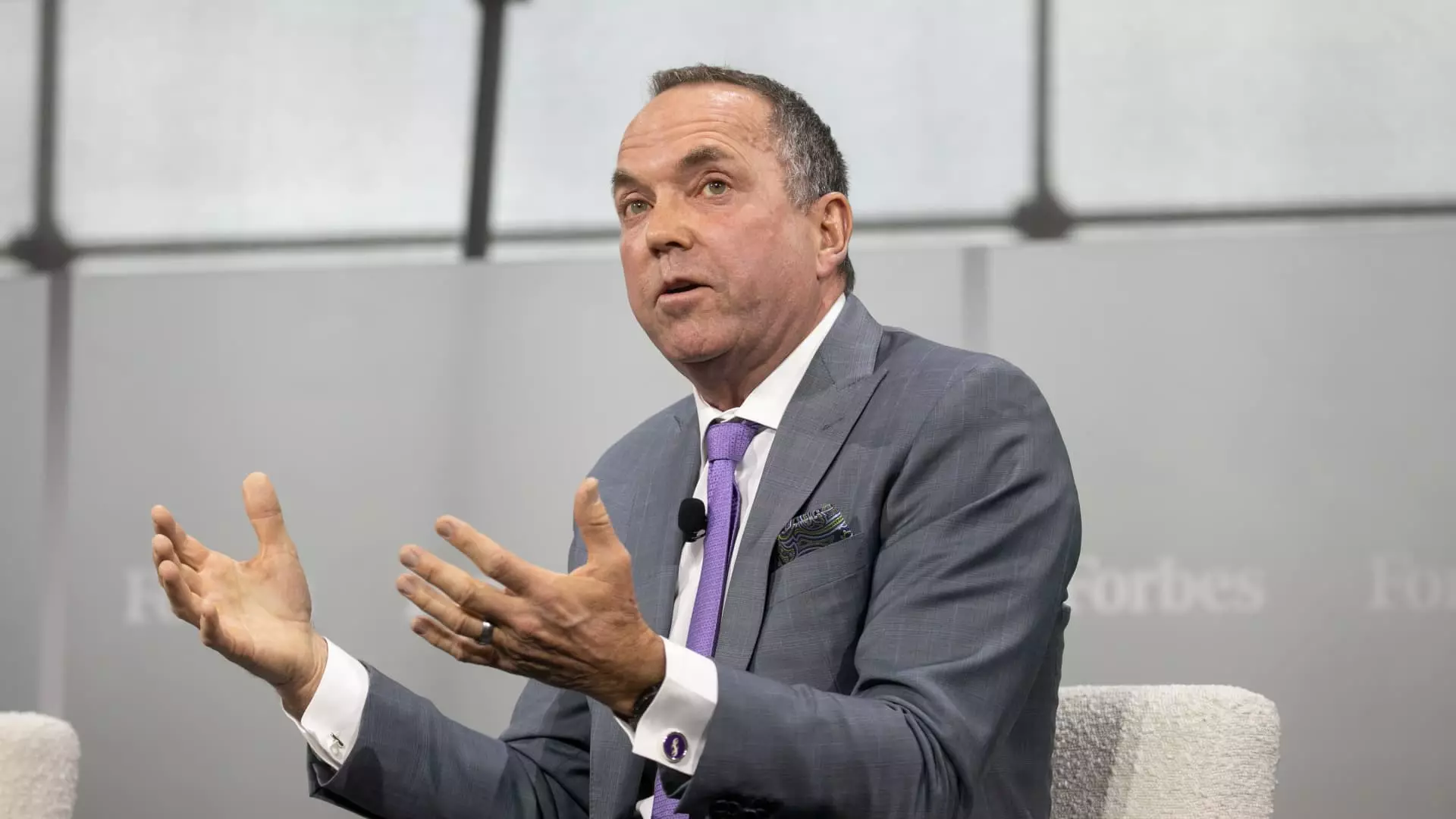In the high-stakes world of cutting-edge biotechnology, few stories have cast as dark a shadow as the recent turmoil surrounding Sarepta Therapeutics and its flagship gene therapy, Elevidys. Once hailed as a beacon of hope for children suffering from Duchenne muscular dystrophy (DMD), this therapy now teeters on the brink of being pulled from the market, exposing an unsettling truth about the fragility of trust in innovative medical treatments. The recent plunge of Sarepta’s stock by over 30% isn’t just a reflection of financial losses — it’s emblematic of a broader crisis that questions the direction and regulation of life-altering therapies.
The core issue isn’t solely the drug’s questionable efficacy; it’s the mounting concerns about safety and oversight. The Food and Drug Administration’s (FDA) threat to request a voluntary halt of Elevidys shipments signifies a severe breach of confidence, especially in a landscape where the promise of gene therapy has historically been met with cautious optimism. This crisis underscores an uncomfortable reality: the rush to bring breakthrough treatments to market may overshadow the fundamental obligation to protect human life, particularly when the stakes involve children with limited therapeutic options.
Safety Over Hype: The Grim Toll of Overreach
The grim realities of Elevidys’ safety record reveal a disturbing pattern. Reports of two teenage boys dying from liver failure after receiving the therapy paint a chilling picture of potential risks that may have been underestimated or overlooked in the pursuit of regulatory approval. Moreover, an additional death linked to a separate Sarepta gene therapy compound reinforces the peril of embracing unproven treatments without rigorous, long-term safety data.
The controversy deepens when considering that the initial approval of Elevidys was based on limited clinical evidence, with contentious expansion of its use to broader patient groups. The FDA’s decision to grant full approval for children as young as four — even when the disease had already progressed significantly — was driven by the desperation to address unmet needs. However, it also opened the floodgates for potential harm, especially when the therapy failed to meet its primary endpoints in Phase 3 trials. This raises serious questions: are we prioritizing hope and innovation over safety? Has the rush to provide access compromised critical scientific standards?
The comparison to Novartis’ Zolgensma underscores the gravity of the situation. Unlike Sarepta’s Elevidys, Zolgensma’s risks are better understood, and its benefits are more clearly demonstrated. The fact that Elevidys shares a similar delivery mechanism yet carries unknown safety risks highlights the dangerous gamble that biotechnology companies, and regulators, are willing to take with patient lives.
Market Vulnerability and the Future of Innovation
Sarepta’s dependence on Elevidys as its primary revenue driver makes its current instability not just a corporate crisis but a potential catalyst for broader policy reflection. The company’s assertion that even limited use—excluding patients who no longer walk—could produce annual revenues of half a billion dollars appears dismissive of the true danger posed by potential adverse outcomes. The financial stakes seem to overshadow the moral obligation to ensure treatment safety, exposing a troubling imbalance in the commercialization of life sciences.
Furthermore, Sarepta’s effort to reassure investors amidst the chaos reveals a shortsighted focus on earnings rather than patient well-being. The company’s decision to cease shipments for patients with advanced disease demonstrates a recognition of mounting risks but also highlights a cynical prioritization: withdrawal until safety concerns are resolved, rather than a comprehensive overhaul that addresses fundamental issues.
This upheaval prompts a broader societal question: Should regulatory agencies be more assertive in holding biotech giants accountable? The predicament with Sarepta exemplifies how regulatory frameworks can be manipulated or influenced by corporate interests, risking lives in the process. An over-reliance on accelerated approvals, especially in severe disorders like DMD, might serve corporate agendas more than patient safety. It’s a prescription for disaster when profit motives eclipse scientific rigor.
The Ethical Dilemma of Urgency vs. Caution
For families like Jennifer Handt’s, who have seen tangible benefits from Elevidys, the situation is heartbreaking. Her son’s positive response amidst the risks underscores a moral dilemma: the urgent need for effective treatments for devastating diseases versus the undeniable dangers posed by immature therapies. Her willingness to accept potential liver toxicity, knowing her son benefitted, highlights a profound conflict — weighing hope against human safety.
Yet, this personal story also emphasizes that while hope is a powerful motivator, it cannot justify the reckless deployment of unproven treatments. The idea that “we don’t have the luxury of not taking the risk” is both a testament to parental desperation and a dangerous fallacy that may lead to preventable tragedies. Ethical oversight must temper innovation, ensuring that the pursuit of breakthrough therapies doesn’t come at the expense of fundamental safety standards.
The case of Sarepta’s Elevidys serves as a stark warning of a biotech landscape increasingly driven by urgent needs and lucrative markets. It reminds us that human lives should not be sacrificed in the pursuit of rapid innovation. Regulatory vigilance, corporate accountability, and ethical integrity are imperative to navigate the treacherous waters of gene therapy—a field that offers hope, but also harbors profound risks that we must confront with unwavering scrutiny.


Leave a Reply